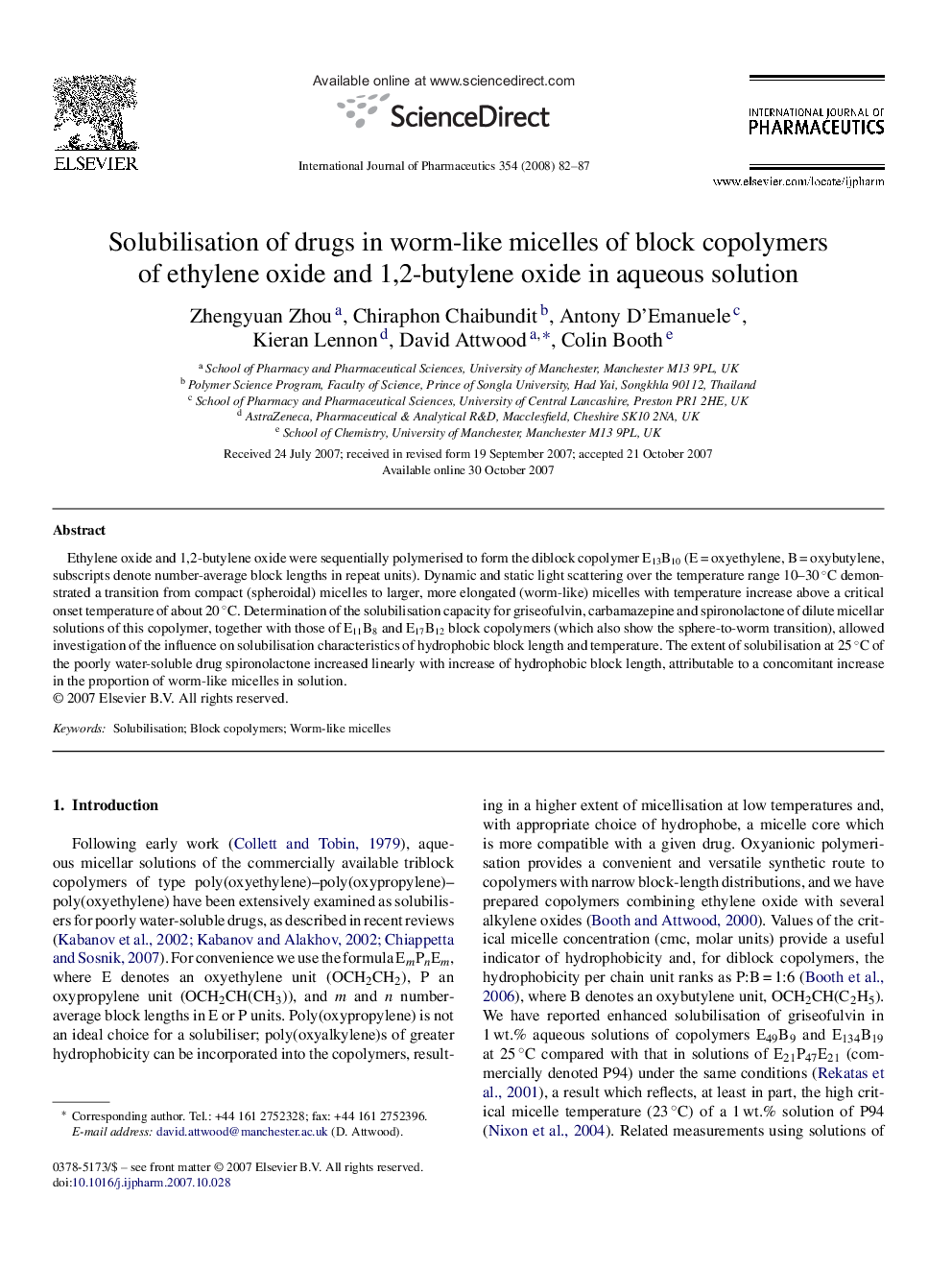| Article ID | Journal | Published Year | Pages | File Type |
|---|---|---|---|---|
| 2505533 | International Journal of Pharmaceutics | 2008 | 6 Pages |
Ethylene oxide and 1,2-butylene oxide were sequentially polymerised to form the diblock copolymer E13B10 (E = oxyethylene, B = oxybutylene, subscripts denote number-average block lengths in repeat units). Dynamic and static light scattering over the temperature range 10–30 °C demonstrated a transition from compact (spheroidal) micelles to larger, more elongated (worm-like) micelles with temperature increase above a critical onset temperature of about 20 °C. Determination of the solubilisation capacity for griseofulvin, carbamazepine and spironolactone of dilute micellar solutions of this copolymer, together with those of E11B8 and E17B12 block copolymers (which also show the sphere-to-worm transition), allowed investigation of the influence on solubilisation characteristics of hydrophobic block length and temperature. The extent of solubilisation at 25 °C of the poorly water-soluble drug spironolactone increased linearly with increase of hydrophobic block length, attributable to a concomitant increase in the proportion of worm-like micelles in solution.
